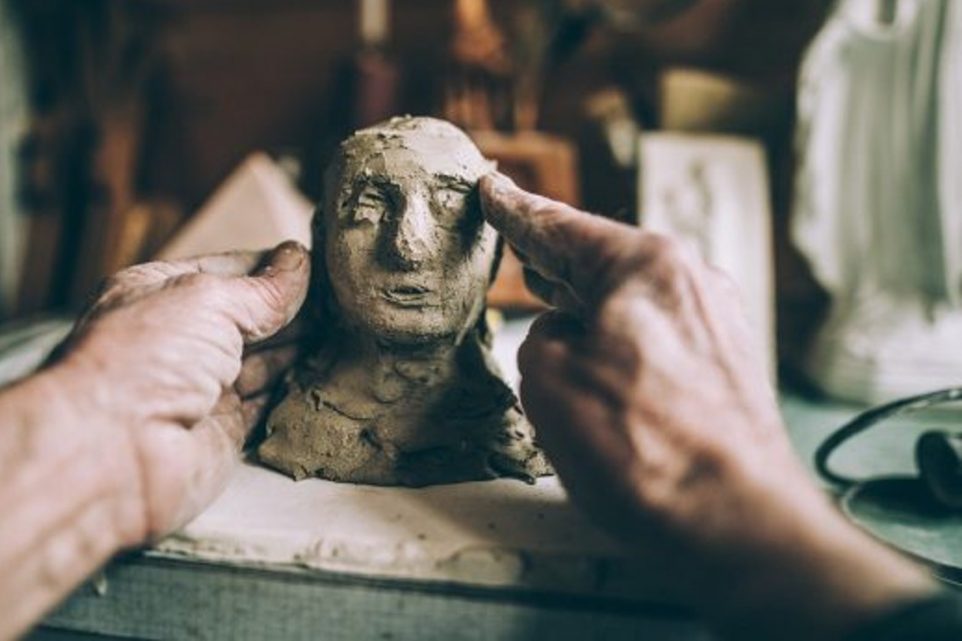Molding vs Sculpting Clay: What’s the Difference?

Molding and sculpting clay are two different mediums used in the art of creating three-dimensional objects, but there are a few key differences that make a world of difference when it comes to their uses. If you’ve ever wanted to explore the world of clay art but didn’t know where to start, this post will explain everything you need to know about molding and sculpting clay. We’ll look at the tools and materials used, the advantages and disadvantages of each method, and tips on how to get started. So, if you’re ready to craft a masterpiece, read on to learn more.
Defining Molding vs. Sculpting
Molding
Molding is a process that uses a premade form to shape wet clay. The clay is placed inside the mold, then pressure is applied by either using a press machine or hand-applied pressure to conform to the shape of the mold. Once the clay has hardened, it can be removed from the mold and used as desired.
Sculpting
Sculpting is a process that involves manipulating raw clay material to create a piece of artwork. This is done with tools such as knives, chisels, and other instruments meant for carving, shaping, piercing, cutting, and smoothing clay material. Sculptures created from clay are often highly detailed or stylized works of art rather than functional items used for everyday purposes.
Materials Used for Molding vs. Sculpting
Molding
The most common molding materials are plaster molds made out of stone or rubber molds made out of silicone rubber or latex rubber. Plaster molds can be easily made at home with plaster of Paris mixed with water to create the desired shape. Stone molds are usually more expensive than plaster molds, but they are more durable and can withstand repeated use with wet clay.
Sculpting
For sculpting, any type of air-dried or oven-dried clay can be used depending on personal preference or project needs. Air-dried clays remain soft after being molded with hand tools while oven-dried clays turn hard after being baked in an oven at high temperatures.
Processes Used for Molding vs. Sculpting
Molding
The process for molding typically involves first creating a negative form or template from which the desired shape is created in wet clay that has been prepared according to specific instructions. The wet clay is then filled into the mold cavity and left to dry over time to harden into its final shape and size before being removed from the mold when fully cured.
Sculpting
The process of sculpting usually begins with taking raw lumps of wet clay, kneaded evenly until it becomes malleable enough to manipulate according to a certain vision or design plan. A variety of tools can then be used on this malleable raw material to carve, shape, or otherwise manipulate it into any desired form or sculpture until it reaches its final form. It is then left to cure and harden into that shape accordingly so that it can be preserved in its exact form.
Advantages of Molding vs. Sculpting
Molding
Molding offers several advantages, such as providing consistent shapes over multiple pieces and accurately duplicating complex shapes. It also allows designers who aren’t experienced sculptors quicker access to producing their projects.
Sculpting
Sculptors have more freedom when completing their sculptures. There are no restrictions when compared to the process of molding. Sculptures are usually better suited at capturing fine details onto finished pieces quickly while having access to more complicated designs if required.
Disadvantages of Molding vs. Sculpting
Molding
Molding has some drawbacks. It relies on a premade form, so intricate details may not always show up. This method is better suited to larger pieces, as small pieces can break apart in the molds.
Sculpting
Sculpting can be incredibly time-consuming. Each piece must be manually manipulated. Errors often occur within this technique due to the careful crafting required to sculpt each piece.
Conclusion
Molding and sculpting are two unique processes that use clay as their main material to create pieces of artwork. Both of these processes use clay but the tools, methods, and desired outcomes for each are different. Understanding the distinction between molding and sculpting clay can help you decide which technique is right for your next project.
Trusted Insights from Artists
At Art Life Today, our passion for arts and crafts is at the heart of everything we do. We understand that the right tools and materials can make all the difference in your creative projects, so we take our responsibility as reviewers seriously. Our goal is to help you discover the best products that will inspire your creativity and bring your artistic visions to life.